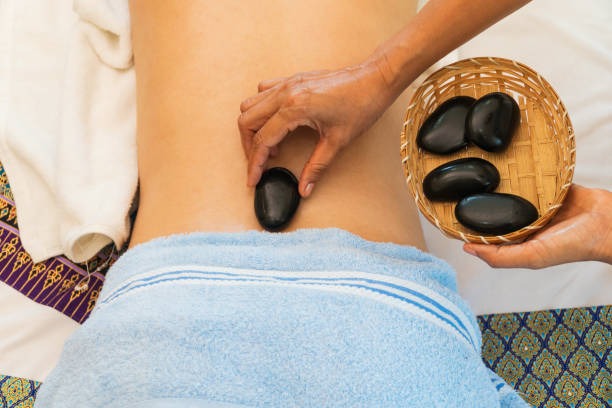Reclaiming Sacred Intimacy: The Essence of Tantra

In a world that often moves too fast, where intimacy is rushed and connection becomes surface-level, Tantra invites us to slow down and return to the body, the breath, and the sacredness of being. At its core, Tantra is not just about sexuality—it’s about presence. It’s about honoring the life force that flows through each of us and awakening love, not just with others, but within ourselves. In the Tantric path, every touch, every glance, every breath becomes a meditation—a portal to something deeper. What is Tantra, Really? Tantra is an ancient spiritual practice that originated in India, rooted in the idea that the divine exists in all things—including our bodies and our pleasure. Rather than escaping the body to find enlightenment, Tantra teaches us to embody it fully. To feel. To breathe. To listen. Tantra honors feminine and masculine energies—Shakti and Shiva—as sacred forces within us all, seeking balance and union. Healing Through Touch and Awareness Many of us carry wounds around intimacy—old stories, traumas, and cultural shame that live in our nervous system and tissues. Tantric practices offer a gentle, powerful way to release these blockages and reclaim joy, trust, and pleasure. Sessions may include guided breathwork, conscious touch, energy movement, and deep presence. Every experience is held in a safe, loving, and non-judgmental space where your boundaries are honored and your journey is supported. Returning to the Heart At the heart of Tantra is love—not the romantic, fleeting kind, but a deep, unshakable love for self, for life, and for the sacred dance of energy within and around us. As we reconnect with our sensual and spiritual selves, we open to more radiance, softness, clarity, and connection—not only in our intimate lives, but in how we relate to the world. Are You Ready to Begin? Whether you’re drawn to this path for healing, awakening, or a deeper connection with yourself or your partner, you are welcome here. Explore our offerings, tune into your body’s wisdom, and take the first step into a more embodied, loving, and alive version of you.
Awakening Love: A Return to the Heart

Awakening Love: A Return to the Heart “Love is the bridge between you and everything.” –Rumi What is the Love we seek? It is the quiet blessing of Life itself—the fragrance of a flower opening to the morning sun, the fire that makes the stars shine, the pulse that moves the tide of the Cosmos toward beauty, awareness, and meaning. Love is the very cradle of existence, the silent intimacy that calls us into the depths of meditation, the flame that burns away all our limitations. And yet, it seems that we live in a time when the Heart is often forgotten—traded for comfort, security, and fleeting successes. The world rushes to distraction, chasing things that cannot nourish the soul, building structures that will crumble under the weight of their own emptiness. 5-Day Silent Retreat: Awakening Love Within This March, we’re launching a new offering—a 5-day retreat devoted to awakening Love. It is an invitation to rediscover this powerful force beyond the realm of emotions, as the very essence of our being. Through Hridaya Meditation, Self-Inquiry, Hatha Yoga, Sacred Silence, and other transformative practices, we will marvel at how Love gradually and naturally unveils itself. Love cannot be learned, only revealed, since its nature is Grace. Love is not about attachment and possessing—it is the art of dissolving completely in the arms of the Infinite Beloved. This is an invitation to soften, to live with an open heart, to embody kindness, generosity, and compassion—to trust Life and surrender to the sacred rhythm of Love itself. What You Will Experience Over these five days, we will journey through seven stages of awakening to Love: · Awareness: Recognizing the landscape of your soul. · Awakening to Love: Diving inward to the supreme source of Love itself. · Understanding Limitations: Seeing through the veils of conditioning. · Sublimating Fear, Pride, Attachment, and Doubt: Transforming barriers into bridges to Light. · Surrendering to the Heart’s Pure Intention (Iccha): Trusting the sacred tremor within. · Living from the Heart: Embodying Love as a natural state. · Integration into Life: Bringing Love into every breath, every step. Who Is This Retreat For? This retreat is for lovers of Truth, for those who have felt the ache of separation and long to return to Oneness, Devotion, and Compassion. It is for those who seek to embody Love—not just as an emotion, but as a way of being. No prior meditation or yoga experience is needed—only a heart willing to open and listen. Why Join? Because the world does not need more division and alienation, it needs more empathy, awareness, and compassion. Because even now, deep down, our souls long for authenticity and openness. This retreat simply offers us the inspiration and silence in which the soul can finally blossom. Cœur de Lion The world needs hearts unafraid to burn for Truth, hearts that can stand unwavering and face the tide of fear and materialism. At Hridaya, we are devoted to cultivating the Cœur de Lion, the Lion’s Heart, which does not seek power but is power itself. This is not a moralistic call to arms but to Presence; it is an invocation of inner strength, courage, beauty, and devotion. Through this retreat, we will learn to embody compassion in our daily lives, to see the world through the eyes of Love, and to meet life’s challenges with the Witnessing Attitude—which means maintaining the awareness of the vast, unshakable Heart. One day devoted to the pursuit of Beauty, Compassion, and Love is worth more than a century of power built on fear. Love is waiting.Not just for others, not in tomorrow, but here in You. Now. It is spanda, the quiet tremor of your own heart. Let Love speak for itself—in you, through you.Be ready to listen and surrender until only Love remains. A Simple Practice to Expand Your Heart Sit quietly, close your eyes, relax, and bring the awareness to the middle of the chest, one finger-width to the right. Take a deep breath, allowing yourself to settle into stillness. Now, recall someone you love deeply. Notice how your heart responds—perhaps with warmth, openness, or a gentle sense of expansion. Dive into this feeling for at least a minute, allowing Love to unfold naturally. Next, bring to mind someone you struggle with—someone who challenges you or with whom you feel tension. Observe your heart’s response. You may notice contraction, discomfort, or resistance. Simply acknowledge this reaction without judgment for one minute. Once again, return to the image of the person you love. With even more clarity, feel the shift that happens—how your heart opens effortlessly in this evocation. Stay with this sensation. Then, while holding this openness, gently recall the person you struggle with. This time, remain aware of any tendencies to contract, but do not follow them. Instead, invite your heart to stay as vast and unshaken as it was before. This is the subtle training of the heart—learning to stay open and embrace Life without conditions, without withdrawing. Now, holding both people in your heart, contemplate their joys, their struggles, their longing for peace and love. Softly, within yourself, with the same attitude for both, offer them these simple blessings: “May you be free.”“May you be at peace.”“May you be held in Love.” Then, turn these words inward. Offer them to yourself with the same sincerity: “May I be free.”“May I be at peace.”“May I be held in Love.” Loving is the path to freedom. Compassion is the recognition that we were never separate. Try this practice for a few minutes today. Who will you send Love to? With Love, Odete Daniel
Yoni Puja: Worshipping Shakti

The most well-known treatise about worshipping the yoni is, without doubt, Yoni Tantra. As is the case in many other Tantras, this tantric text is a dialog between Shiva and Parvati. It reveals the highly revered sadhana practiced by kaulas (tantrics), the yoni puja. It is known that the Kaulas (Kaula or Kula describes a type of Hindu Tantra), closely linked to the Siddha and Natha traditions, regarded female gurus very highly, and there were many examples of yoginis or female Tantrics. Their reverence towards Shakti is beautifully expressed many times in the Tantras (such as Shakti Sangama Tantra and Devirahasya). In both Kulachudamani Tantra and the Brihad Nila Tantra, the Kaula is instructed to recite a mantra inwardly whenever he sees a woman. In the traditional texts, we find the following references:“Women are divinity, women are life, women are truly jewels.” (Yoni Tantra, Patala 7) “Worship carefully a woman or a maiden as she is Shakti, sheltered by the Kulas. One should never speak harshly to maidens or women.” (Kaulajnananirnaya, Patala 23) “In Kaula every woman is thought of as a manifestation of the Goddess. No man may raise his hand, strike or threaten a woman. When she is naked, men must kneel and worship her as the Goddess. She has equal rights with men on all levels.” (Occult World of a Tantrik Guru, Values Vol. IX) “Women are heaven; women are dharma; and women are the highest penance. Women are Buddha; women are the Sangha; and women are the perfection of Wisdom.” (Yoni Tantra) “Hari, Hara, and Brahma – the gods of creation, maintenance, and destruction – all originate in the yoni.” (Yoni Tantra) “The divine yoni is as brilliant as tens of millions of suns and as cool as tens of millions of moons.” (Shiva Samhita, 15th century) “Devi is at the base of the yoni and Naganandini is in the yoni. Kali and Tara are in the yoni chakra, and Chinnamasta in the hair. Bagalamukhi and Matangi are on the rim of the yoni. Mahalakshmi (Kamalatmika), Shodashi (Tripura Sundari), and Bhuvaneshvari are within the yoni. By worshipping the yoni one certainly worships Shakti.” (Yoni Tantra, Patala 3) “For the sadhaka who says ‘Aim Aim’ at the time of worship, the yoni is fortunate and gives both enjoyment and liberation. A yogin is not a bhogin (seeker of pleasure) and a bhogin is not a yogin, but if one worships the yoni, one is a Kaula, a person who has both yoga and bhoga (enjoyment). All worship is pointless without worship of the yoni, O Durga.” (Yoni Tantra, Patala 3) “Worshipping this causes Shivoham. Listen, Parvati! Krishna, after worshipping Radha’s yoni, became God Krishna. Sri Rama Janaki Nath worshipped Sita’s yoni. Vishnu, Brahma, the saints, and I myself all were born from a yoni. What knowledge in the three worlds can match the magnificence of the yoni?” (Yoni Tantra, Patala 4) “The vagina is Mahamaya and the penis is Sadashiva. Worshipping them, one becomes liberated while still alive, there is no doubt about it.” (Yoni Tantra, Patala 5) “Liberation is achieved through enjoyment. Happiness is gained through enjoyment. Therefore, by every effort, a sadhaka should become an enjoyer. The wise man should always avoid blame, disgust, or shame of the yoni.” (Yoni Tantra, Patala 6) WHAT IS A YONI PUJA? A yoni puja is a sacred ritual during which the yoni is worshipped. It is very important to understand that the prerequisite for worshipping the yoni is the purification of the mind from worldly ideas about the yoni. The yoni is the form of the cosmos and encompasses the mysteries of creation. Reverence in front of Shakti’s mystery is the attitude that needs to be cultivated to perform a yoni puja. That is why in Yoni Tantra we find this warning: “Never worship the yoni in front of pashus (males still possessed by their animal nature).” Outer Yoni Puja A yoni puja can be performed by using a sculpture, painting, or sanctified natural object representing a yoni as focus of veneration, or by worshipping the yoni in her living form. We can imagine that as a ritual of worship that goes back thousands of years and which is still being practiced today in India, a yoni puja embraces many forms. Despite these differences, there are several ritual elements with very clear symbolism that constitute the core of a yoni puja. Elements of Outer Yoni Puja: A yoni puja can be performed in mixed groups, although sometimes only women or only men may be in attendance. What is most important in a yoni puja is the devotion towards Shakti and single-minded attention of the practitioners. It is this combination of love and awareness that enables the raising of consciousness during these rituals. The crucial aspect of being in deep love with and having reverence for the Mother in all Her forms can not be overemphasized. Women are multiple facets of the Supreme Shakti. Inner Yoni Puja Inner yoni puja implies that we must as clearly as possible visualize the image of a yoni (a sculpture, a picture, a sanctified object, or the living form of a yoni) and contemplate it as long as possible with devotion and reverence.
